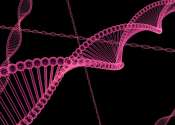Superflimsy graphene turned ultrastiff by optical forging
Graphene is an ultrathin material characterized by its ultrasmall bending modulus, superflimsiness. Now the researchers at the Nanoscience Center of the University of Jyväskylä have demonstrated how an experimental technique ...









